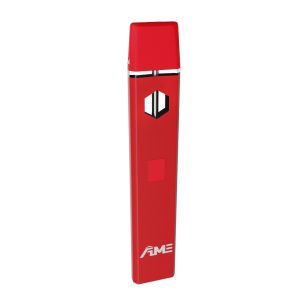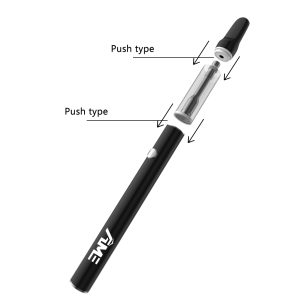YOUR CART
- No products in the cart.
Subtotal:
$0.00
BEST SELLING PRODUCTS

Vaping has become increasingly popular over the past decade, with millions of people around the world using electronic cigarettes (vapes) as an alternative to traditional smoking. But what exactly is vaping, and how does it work?

vapes, commonly known as vapes, operate by heating a liquid (often called e-juice or vape juice) to produce an aerosol, or vapor, that the user inhales. The device typically consists of a battery, a heating element (atomizer), and a reservoir for the liquid. The user activates the device, either by pressing a button or simply inhaling, which triggers the battery to heat the liquid and create the vapor.
The concept of the electronic cigarette dates back to the 1960s, but it wasn’t until the early 2000s that modern vapes began to take shape. Chinese pharmacist Hon Lik is credited with inventing the contemporary vape in 2003, and since then, the technology has rapidly evolved. Today, there are a variety of devices available, from simple disposable vapes to more advanced best pod system setups.
vapes come in several forms, each catering to different preferences and needs:

The atomizer is the heart of any vaping device. It contains the heating coil that vaporizes the e-liquid. Different types of atomizers (e.g., rebuildable, sub-ohm) provide various levels of vapor production and flavor intensity.
The battery powers the atomizer and is a critical component in determining the device’s performance. Batteries come in different sizes and capacities, affecting the device’s lifespan and power output. Safety features such as overcharge protection and short-circuit prevention are crucial for preventing accidents.
E-liquid, or vape juice, is typically composed of four main ingredients: propylene glycol (PG), vegetable glycerin (VG), flavorings, and nicotine. However, when juice weed is involved, the e-liquid also contains THC (tetrahydrocannabinol), the psychoactive compound found in cannabis.

THC, or tetrahydrocannabinol, is the primary psychoactive compound in cannabis. It is responsible for the “high” that users experience. THC is extracted from cannabis plants and can be infused into e-liquids for use in vaping devices.
While THC and CBD (cannabidiol) are both cannabinoids found in cannabis, they have different effects. THC is psychoactive, producing euphoria and altering perception. CBD, on the other hand, is non-psychoactive and is often used for its potential therapeutic benefits, such as reducing anxiety and pain.
The legality of THC varies widely around the world. In some places, it is fully legal for both medicinal and recreational use, while in others, it remains strictly prohibited. It’s essential to understand the laws in your area before purchasing or using THC-infused vape products.
When considering vape brands that offer THC products, it’s vital to be aware of the potential effects and risks associated with vaping THC.
The immediate effects of vaping THC can include relaxation, euphoria, altered senses, and increased appetite. Some users may also experience side effects such as dry mouth, red eyes, and impaired coordination.
Long-term use of THC can lead to several health issues, including dependence, cognitive impairments, and respiratory problems. It’s important to use THC responsibly and be aware of its potential impacts on your health.
The safety of vaping THC is a topic of ongoing debate. Here are some key considerations:
To minimize risks, follow these guidelines:
Vaping THC carries certain health risks, including lung injury, which was notably highlighted during the 2019 vaping-related lung injury outbreak in the United States. Many of these cases were linked to vitamin E acetate, an additive found in illicit THC vape cartridges. Always ensure your THC products are free from harmful additives.

When selecting a THC vape product, consider the following:
Look for products that have been tested by third-party labs and come with certifications ensuring they meet safety standards. This helps ensure that the e-liquids are free from contaminants and accurately labeled for THC content.
Buy from reputable dispensaries or online stores known for their quality and transparency. Avoid purchasing from unverified sources that might sell counterfeit or unsafe products.
Yes, THC can be addictive. Regular use can lead to dependency, where users feel compelled to continue using despite negative consequences. It’s important to use THC responsibly and be aware of the signs of addiction.
There is evidence suggesting that vaping THC, especially from unregulated sources, can cause lung disease. The 2019 outbreak of EVALI (vape, or vaping, product use-associated lung injury) was linked to illicit THC products containing vitamin E acetate. Always use reputable products to minimize risk.
High-quality THC vape products typically come with lab test results verifying their purity and potency. Look for clear labeling, child-resistant packaging, and positive reviews from other users. Trustworthy vape brands will provide detailed information about their products.
Yes, THC vapes can be used for medical purposes. Many patients use THC to manage conditions such as chronic pain, nausea, and anxiety. However, it’s essential to consult with a healthcare professional before starting any THC regimen to ensure it’s appropriate for your medical needs.
Vaping with THC can offer an alternative way to consume cannabis, providing a potentially less harmful option compared to smoking. However, it’s not without risks. By understanding the components of vapes, the nature of THC, and the potential effects and safety concerns, users can make informed decisions. Always choose reputable vape brands, follow safety guidelines, and stay informed about the latest research and regulations surrounding THC and vaping.